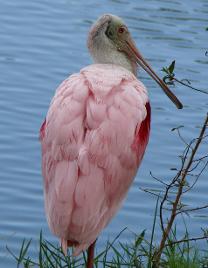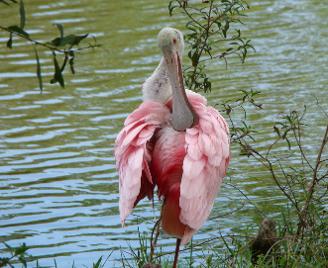



The roseate spoonbill is often found wading in the shallow edges of streams and lakes in Florida looking for a meal of small fish, mollusks, snails, shrimp and insects.
It has a unique way of finding food by swishing his open bill from side to side in the water. Because of the touch receptors in its bill, he is able to locate food this way.
At one time, the spoonbill was on the protected species list as there were so few of them. In the 1800s, its feathers were used to adorn ladies' hats and fans. Loss of habitat also threatened its population.
Today, the spoonbill is flourishing and brings color to the water's edge with its pink feathers. The pink color comes from the kind of food it eats.
Because they are very social, they live in large colonies with ibises, herons, storks, cormorants and egrets as well as other spoonbills.
You will find their large nests built of sticks lined with grass and leaves in trees where both male and female incubate their eggs.